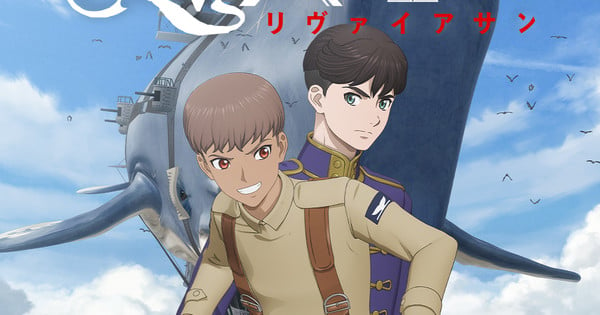
© Orange, Qubic Pictures
The Global Animators panel was a wonderful melting pot of ideas and internationality, ushering forth intriguing conversation on how animation production works on a global scale. Hosted by Qubic Pictures and featuring creators from D’Art Shtajio, N LITE, Studio Orange, and Lucasfilm, the panel had an insightful discussion regarding the importance of diversity and global collaboration from both sides of the pond.
As a veteran of the anime industry, Studio Orange‘s own Yoshihiro Watanabe discussed how his early work on Marvel’s direct-to-video series Hulk Vs. gave him some firsthand experience with international production. “We were given American storyboards and we were asked to animate whole sequences,” Watanabe said. “I thought I was just working on a cartoon that’s not anime. But the director came in to adjust all the timing for the boards, and you feel this sensation in anime. I’m like, oh, anime might not be the looks of it, but how people tell its stories and the timing of things. So it feels that anime is about what should be told slowly or faster, and that opened up my mind to many forms of anime.”
Regarding the differences between the Japanese and Western sides of the industry, Watanabe remarked that in his early days, the U.S. side of things was so used to doing work-for-hires to Asian studios that they would want the studios to listen to their side, while the anime side just wanted to listen to themselves. “I felt the necessity to bridge the cultures to communicate for international projects,” Watanabe said. “It’s not just about speaking the same language.”
N LITE founder and CEO Christiano Terry would add to Watanabe’s comment. “Speaking of bridging cultures,” he said, “we’re bridging the Congo with Japan [with MFINDA].”
Terry spoke highly of two specific members of MFINDA‘s staff: the creator Patience, whom he found on Instagram, and screenwriter Don Hughlett, who had previously worked with Disney when they started bringing Studio Ghibli films to the U.S. “It’s so great when you can take one culture and bring all of that art and storytelling and that authenticity, and bridge it with another culture that’s just as powerful,” Terry said. “Through this project, we found a lot of things in common with Japanese culture with people in the Congo.”
Being that this was a panel hosted by Qubic Pictures, Star Wars: Visions was part of the discussion from a production standpoint, as well as being a shining example of international influence and collaboration. Qubic’s own Josh Rimes talked about how the samurai films of Japanese cinema were the lifeblood and DNA of Star Wars. It was because of that internationality that Star Wars would get the reverse treatment, starting with becoming anime in the first series, and later having its production span across international territories in series two and three.
“Star Wars is based in myth, [these international creators] are mythmaking their own stories,” Rimes said. “Talking to creatives, it wasn’t easy, but it was natural. As producers, we try to get the best out of the creators we work with. The goal with Visions was to let these creators be themselves and express their cultures through the lens of Star Wars because it’s so big and all-encompassing.”
Leviathan‘s production over at Studio Orange would go through a similar process. With a French director at the helm and other staff members hailing from Japan, America, Scotland, and other Asian countries, it seemed like Orange would get the global collaboration a series like Leviathan deserved.
During Leviathan‘s premiere panel just a few hours later, Watanabe said that the collaboration wasn’t limited to a few meetings a year, nor largely involved people just throwing scripts and whatnot to each other via e-mail. Everybody involved worked closely together to bring something from their culture to the table, which is fitting since a theme of the anime is about overcoming differences.
Going back to the Global Animation panel, an interesting miscellaneous tidbit came up in the form of animating horses. “Animating a lot of horses is very tough,” Arthell Isom from D’Art Shtajio recalled. “I remember a conversation in the room where they were talking about the way that the horse trots and runs, and from the Eyre Peninsula perspective, they trot differently from the Japanese perspective. It’s so fascinating, to the point where there was an argument in the room. They couldn’t find a middle ground on which way the horses trot, and then it landed on ‘well, our horses are faster than yours!’ It was the perfect way to demonstrate the difference between two cultures in terms of how it translates into animation.”
